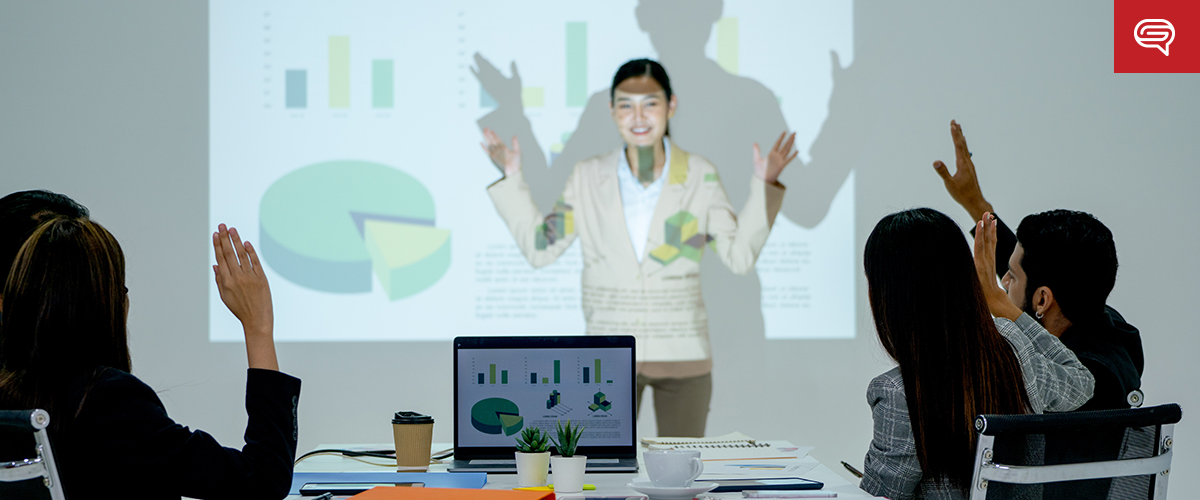
When delivering a successful presentation, capturing the audience’s attention from the beginning is crucial. It sets the tone for the entire session and determines whether your message will resonate with the listeners. One technique that has gained popularity is starting a presentation with a question.
By posing a thought-provoking query, you aim to engage the audience from the start and create a connection that keeps them hooked throughout your talk.
Need a Presentation Designed?
Click Here To View Our Amazing Portfolio
In this blog, we will explore the advantages and potential drawbacks of starting a presentation with a question and provide tips on using this technique effectively.
Advantages of Starting with a Question
Engages the Audience from the Beginning
The human mind is naturally curious. Hence, questions have a way of piquing that curiosity. By starting your presentation with a well-crafted question, you can instantly capture the audience’s attention and compel them to think about the topic.
Thought-provoking questions stimulate the listeners’ minds and make them eager to learn more. This initial engagement sets the stage for a receptive audience throughout your presentation.
Creates a Connection with the Audience
A question serves as a bridge between the presenter and the audience. By involving the listeners right from the start, you establish a connection that goes beyond the role of a speaker.
Questions invite active participation and encourage the audience to become co-creators of knowledge. By soliciting their input and insights, you foster collaboration and make the presentation more relatable. This connection enhances the overall impact of your message and increases the likelihood that it will resonate with the audience.
Sets the Stage for the Presentation’s Content
Introducing your presentation with a question provides a seamless transition into the main topic.
The question acts as a hook that grabs the audience’s attention and gives them a glimpse of what is to come. It sets the context and primes their minds for the information they are about to receive.
As you address the question and provide the answer or explore the topic further, you establish a logical flow that keeps the audience engaged and focused.

Tips for Using Questions Effectively
Choose Relevant and Thought-Provoking Questions
The success of starting a presentation with a question lies in selecting the right one.
Ensure the question is directly related to the topic and aligns with your presentation’s objectives. Avoid generic or predictable questions that fail to spark curiosity.
Craft thought-provoking queries that challenge conventional thinking or highlight the problem your presentation aims to solve.
Encourage Audience Participation without Losing Control
While audience participation is desirable, it is essential to strike a balance between engagement and maintaining control over the presentation.
Set clear boundaries for audience responses to prevent the session from getting sidetracked. Introduce activities or exercises that encourage participation within controlled parameters, such as raising hands or using designated discussion breaks.
Provide Context and a Smooth Transition
To make the transition from the question to the main content seamless, provide context that links the question to the presentation. Explain why the question is relevant and how it ties into the broader topic. This helps the audience understand the purpose behind the question and prepares them for the subsequent information you will share.
Need a Presentation Designed?
Click Here To View Our Amazing Portfolio
Starting a presentation with a question can be an effective technique to capture the audience’s attention, create a connection, and set the stage for your message. However, remember that it’s important to consider the specific audience and topic to determine if this approach is suitable.





